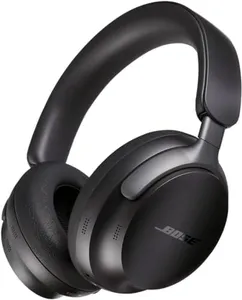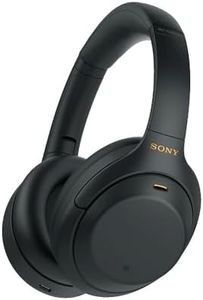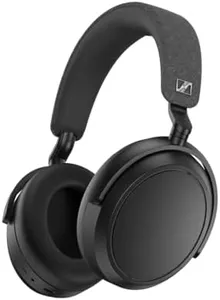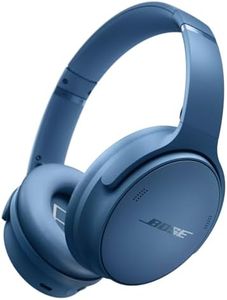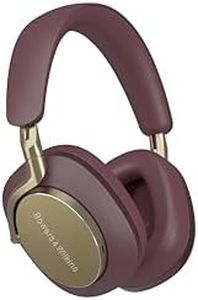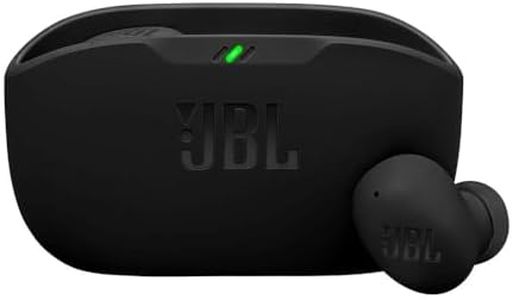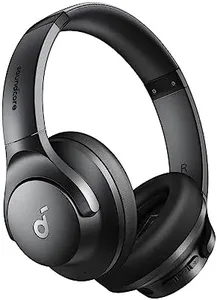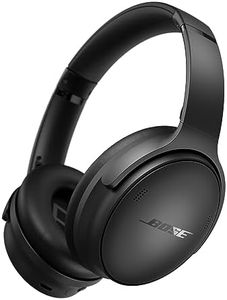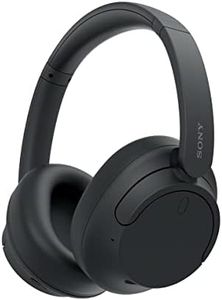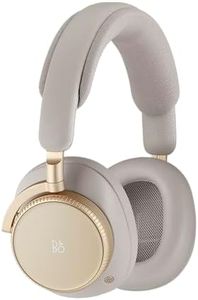We Use CookiesWe use cookies to enhance the security, performance,
functionality and for analytical and promotional activities. By continuing to browse this site you
are agreeing to our privacy policy
10 Best Noise Cancelling Headphones
From leading brands and best sellers available on the web.Buying Guide for the Best Noise Cancelling Headphones
Choosing the right noise-cancelling headphones can make a big difference in how you enjoy music, movies, or even focus in noisy environments. To find the best fit for your needs, think about how you plan to use them—whether for travel, working in busy places, or just relaxing at home. It's important to look at the main specs and features, as each one can affect your experience. Here are the most important things to consider when shopping for noise-cancelling headphones, along with what they mean and how to decide what suits you best:Noise Cancelling TypeNoise-cancelling headphones usually come in two types: active and passive. Active noise cancelling (ANC) uses electronics to listen to outside sounds and cancel them out, while passive noise cancelling depends on the physical design and materials to block out noise. Active systems are best for blocking low, steady noises like airplane engines, while passive ones help with general sound reduction. If you travel often or work in very noisy environments, choose active; if you just want a bit of quiet in moderate noisy places, passive can be enough.
Comfort and FitComfort is essential, especially if you plan to wear your headphones for long stretches. Look at the type—over-ear, on-ear, or in-ear—and consider the materials for padding and headbands. Over-ear headphones usually offer better noise isolation and comfort but can be bulky, while in-ear types are more portable but might not cancel as much noise. Your choice should depend on how long you'll use them and if you want portability or maximum comfort.
Battery LifeBecause noise cancelling needs power, battery life determines how long you can use the headphones before recharging. Typical battery life ranges from 10 to over 30 hours on a single charge. If you often take long trips or forget to charge devices, look for headphones with extended battery life. For those using headphones mainly at home or for short bursts, battery life might not be as crucial.
Sound QualitySound quality refers to the richness, clarity, and balance of the audio. Good headphones reproduce music accurately with clear highs, mids, and deep bass. Some prioritize heavy bass, while others keep a more natural balance. Think about what you usually listen to—music genres, movies, podcasts—and try to pick headphones that match your taste, whether you love deep bass or clear vocals.
Controls and ConnectivityNoise-cancelling headphones can connect via Bluetooth (wireless) or with cables (wired). Wireless models sometimes offer extra features like touch controls, built-in microphones, and integration with voice assistants. Wired headphones usually don’t need batteries for regular listening, just for noise cancelling. If you value convenience and want to use them with phones or on the go, wireless is likely best. For those who don’t want to worry about charging or compatibility, wired might be preferred.
PortabilityPortability refers to how easy it is to carry your headphones. Some models fold flat or come with carrying cases, while others are bulkier. If you need headphones for travel or commuting, lightweight and foldable options are best. If you only use them at home or at a desk, portability isn’t as important.
Additional FeaturesSome noise-cancelling headphones come with extra features like adjustable noise cancellation, transparency modes (to hear your surroundings), quick charge capabilities, or app support for customization. Consider which features could enhance your experience; for example, if you need awareness of your surroundings while commuting, look for transparency mode.
